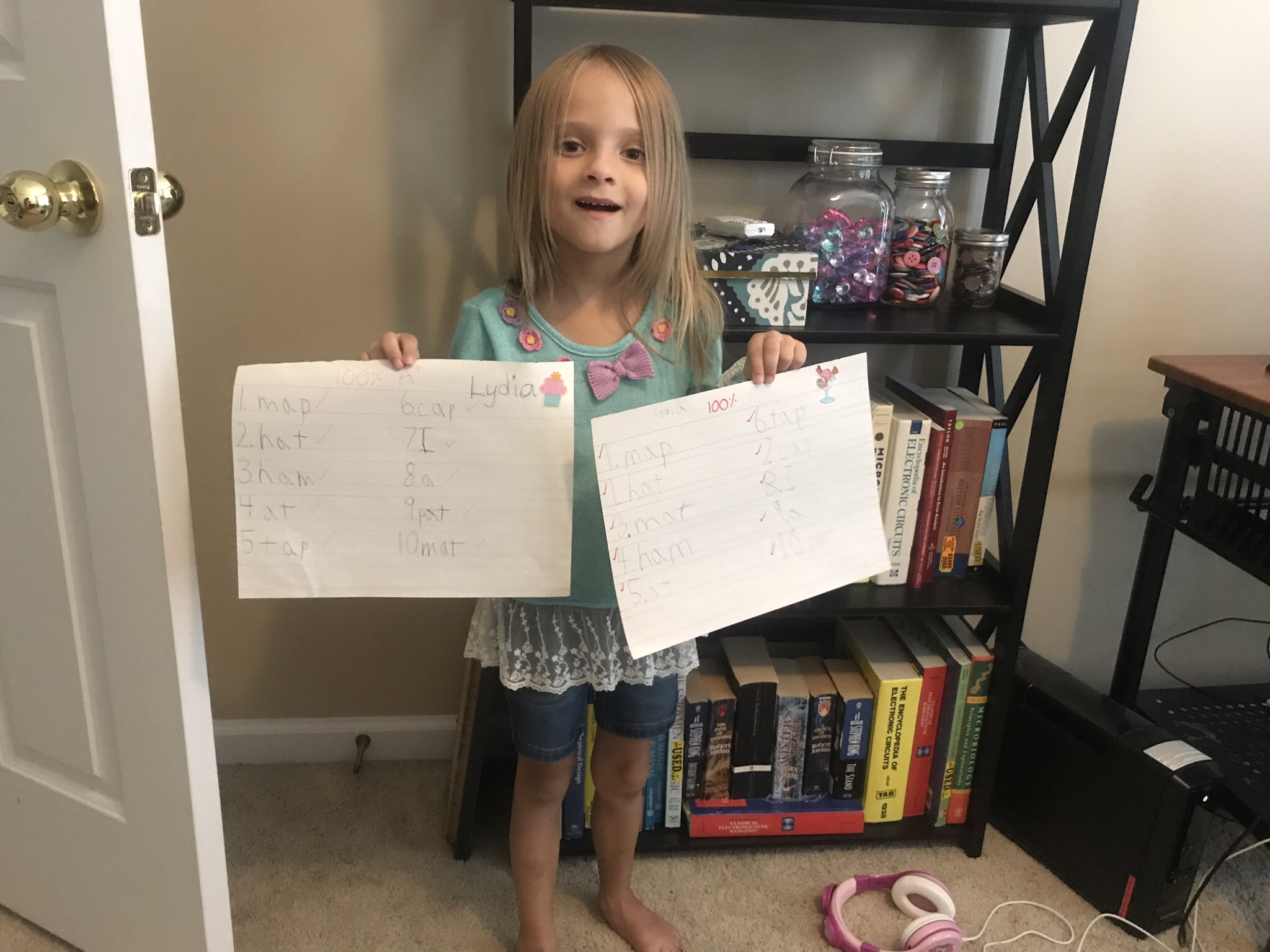This post contains affiliate links. Read the full disclosure here.
How the Ron Paul Curriculum uses weekly spelling lists in teaching your child how to read and write…
Starting in the 5th week of Reading 1, Mrs. Pickard gives a list of 10 spelling words each week. Every day for five lessons they go over the same 10 words.
At the end of the 5th lesson there is a spelling test to see how well the students are doing with the words on the list. Mrs. Pickard has carefully selected the words so that there are words on the list that use the phonics that have been in the lessons.
To test or not to test?
I know homeschool parents who are completely against the idea of any kind of testing. Many are also against the concept of doing assignments and tests for a grade.
For some of them these are reasons they keep their children out of traditional schools. Of course, even for those with this philosophy, I still think the Ron Paul Curriculum could be a good tool for them, because participation in the spelling tests is optional.
In a traditional school environment the teacher is responsible for educating many children. Tests and quizzes are a good way for her to do a quick “check up” to see how each student is faring. She can tell who is keeping up and who still needs some extra instruction. Of course, this is only works if she has the time and resources to actually help the struggling students. When you add grading into the mix, doing poorly on a test can feel more punitive than diagnostic.
Make testing personal
I still have my 6-year-old take the spelling tests and here’s why. I know my children. I know their strengths and weaknesses. However, I am one of those kinds of people who likes to have objective evidence of my children’s learning. For my own peace of mind and because I think it gives them self confidence.
So, we study the words all week and at the end of the week I have her write her name on her paper, number it 1 through 10 and take a spelling test. This is very good practice for the real world, where knowing how to follow instructions is a useful skill. Sometimes she gets them all correct and sometimes she makes some errors. Either way, she gets something out of it.
It is very different from what would happen in a “normal” classroom. I can watch her and I can see her mistakes. Occasionally she gets mixed up and accidentally writes the correct answer, just on the wrong line. I can point this out to her and have her fix it. If she were in a traditional classroom, there’s a chance she might get it counted wrong.
I can see when she’s struggling over a word and I can help her. We can keep working on it until she gets it right. I grade her spelling tests, but we do it until she can get them all correct. We don’t have to move on until she is confident that she knows how to spell all the words on the list. We don’t have a classroom full of kids or a strict curriculum deadline to keep up with.
A confidence booster
Often times on Fridays, her dad will ask her how she did on her spelling test. She can confidently say she got a 100%. Children have a much greater chance to succeed academically when they can go at their own pace and they receive personalized instruction.
Who knows your child better than you?
If you’re curious whether the Ron Paul Curriculum can teach your first grader how to read, just like it has mine, then click here to try the first 40 lessons of Reading 1 for free.
